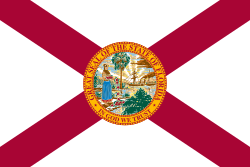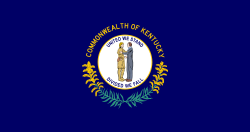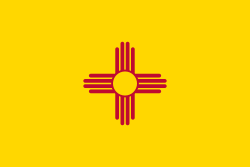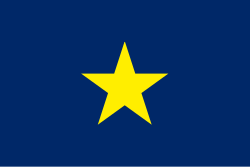
The flags of the U.S. states, territories, and the District of Columbia (Washington, D.C.) exhibit a variety of regional influences and local histories, as well as different styles and design principles. Modern U.S. state flags date from the turn of the 20th century, when states considered distinctive symbols for the 1893 World's Columbian Exposition in Chicago, Illinois. Most U.S. state flags were designed and adopted between 1893 and World War I. [1]
Contents
- Current state flags
- Current federal district flag
- Current territory flags
- Current state ensigns
- Former state ensigns
- Commemorative state flags
- Historical state and territory flags
- Former state flags
- Former territory flags
- Pre-statehood flags
- Native American flags
- Unofficial flags of United States Minor Outlying Islands
- See also
- References
- External links
The most recently adopted state flag is that of Minnesota, adopted on May 11, 2024, while the most recently adopted territorial flag is that of the Northern Mariana Islands, adopted on July 1, 1985. The flag of the District of Columbia was adopted in 1938. Recent legislation in Massachusetts (2021) and Illinois (2024) have started the process of redesigning their state flags. Maine put a flag redesign on the ballot in November 2024, but the new design lost in a referendum. [2] [3]
Many of the state flags share a design pattern consisting of the state seal superimposed on a monochrome background, commonly a shade of blue.










































































































































































































